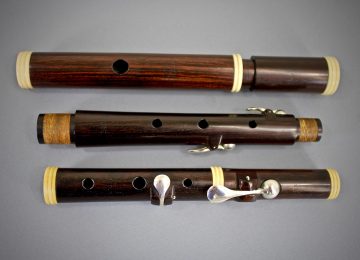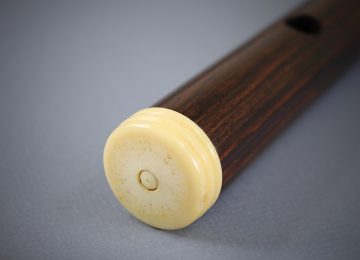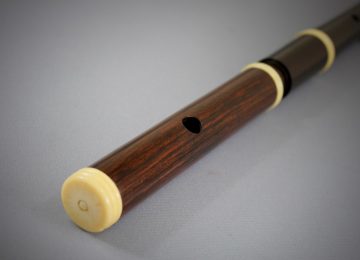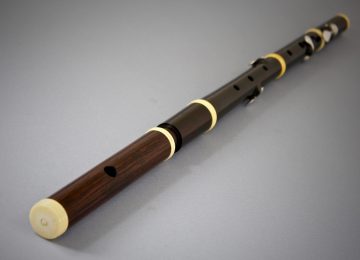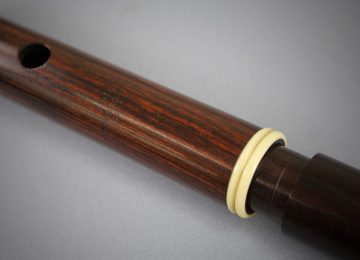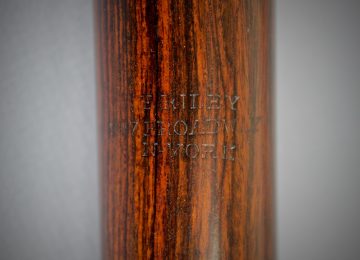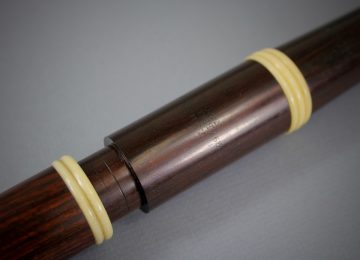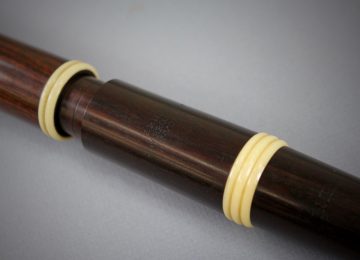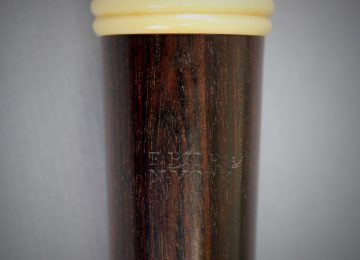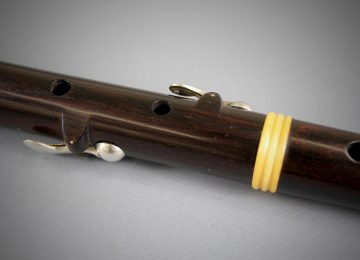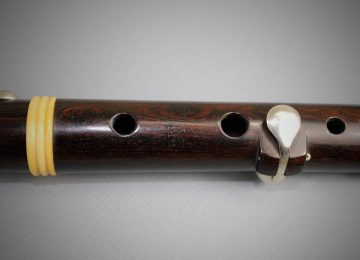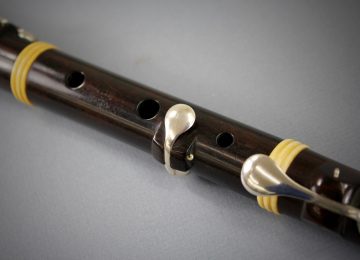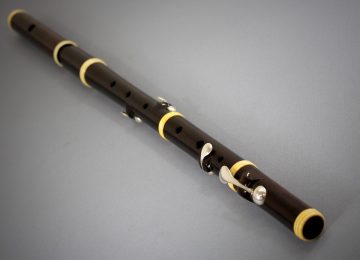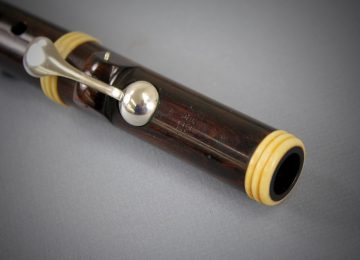Description: This flute is made from beautifully figured cocuswood and has block-mounted, silver keys and delicately turned ivory rings. Its head is partially lined in brass. The outer part of the tuning slide is brass covered with a thin layer of cocuswood with graduated markings. The flute has 4 keys – Bb, G#, short F, and Eb. The key cups are salt spoon style with flat leather covered pads. The ivory end cap has internal threads that engage with a threaded cork holder (turned from ivory), and can be twisted to fine-tune the stopper position. An ivory finial protrudes through the end cap to give a visual indication of the stopper position.
Makers marks: The head is marked “F. RILEY / 297 BROADWAY / N-YORK”. The barrel is marked “F. RILEY / 297 BROADWAY / N-YORK”. The left hand body section is marked “F. RILEY / N-YORK”. The right hand body section is marked “F. RILEY / N-YORK”. The foot is marked “F. RILEY / N-YORK”.
History: Frederick Riley, son of Edward Riley, was a flute maker in New York from 1844 to 1851, and occupied the 297 Broadway address from 1844 to 1850, so this flute dates from that time period. Advertising from 1845 states that “Frederick Riley & Co., are not merely vendors of instruments and music, but are practical manufacturers.” For a detailed history of the Riley family and their role in early American flute making, see this excellent article by Wendell Dobbs.
Tuning: This flute plays very well at A=440 hz with a lovely voice and great intonation, with the tuning slide extended around 12 mm at 70 degrees F. It would be an excellent instrument for playing Irish traditional music, especially for those looking for less breath requirement and smaller tone holes that are easier to cover and make crisp ornamentation easier.
Specifications: C# – D# 260 mm. L2 tone hole 7 mm. R2 tone hole 8.2 mm.
Condition: This exquisite flute is in astoundingly good condition. It really looks and plays as if it came directly from the factory today. It is gorgeous to look at and in fabulous playing condition. This is quite remarkable for a 170 year old flute

